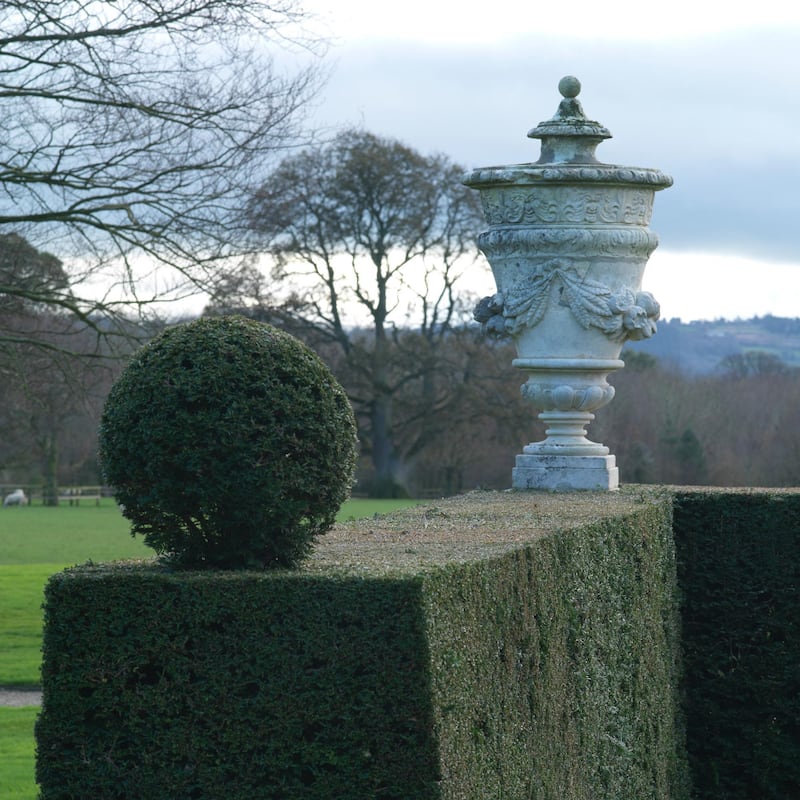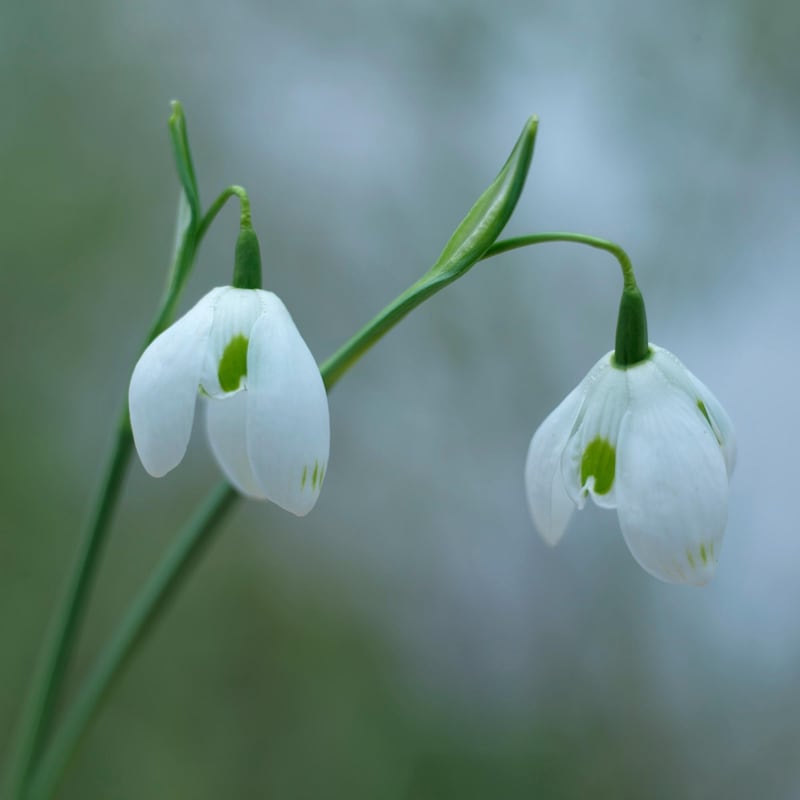Like many gardeners of a certain vintage, I’m possessed of a lifelong aversion to conifers (or at least most conifers) that has been difficult to shake. It’s not solely because of their childhood association with gloom-inducing 1970s rockeries and garden gnomes – that horticultural equivalent of polyester flares and platform boots – although it’s true to say that I can’t walk past an island bed filled with conifers and heathers without suppressing a quiet shudder.
There's also the role played by that most controversial of modern conifers – the monstrously fast-growing, triffid-like leylandii or x Cuprocyparis leylandii – whose use as a light-robbing, moisture-stealing suburban boundary hedge has been the cause of innumerable bitter legal wrangles. Add to this the fact that many of the conifers bought decades ago by Irish gardeners as dwarf varieties have since turned out to be anything but. Also, that certain kinds of conifers – for example, the elegant Italian cypress – struggle to grow well in our mild, cool, damp climate.
Conifers combine particularly well with bamboos, ferns and ornamental grasses, as well as in minimalist or eastern-inspired designs
Finally, there's that unlovely tendency of conifers to develop ugly brown or bald patches when attacked by pests or diseases (soil-borne phytophthora is a common cause of death), or when given the wrong growing conditions, or when scorched by cold winter winds, or when pruned too harshly or at the wrong time of the year. And yet I am clearly out of step, for conifers are now firmly back in vogue along with clogs, crochet and bell-bottoms à la Jane Birkin.
Some, in fairness, never went out of fashion. It's hard, for example, to beat the classic simplicity of a well-grown yew hedge (Taxus baccata), the stately elegance of a columnar Irish yew or the rugged, bristly beauty of a Scots pine. Hard also to deny the splendour of a mature conifer grown in a woodland setting and given space and optimum growing conditions, such as the champion conifers that grow in the great historic gardens of Ireland including Powerscourt, Mount Usher and Kilmacurragh.
It’s also fair to say that for a new generation of gardeners, this hugely diverse group of plants offers much in terms of interesting textures, colour, winter structure, contrasting growth habits, ornamental cones, evergreen foliage and hardiness, especially when used in contemporary ways.
Unsurprisingly and in yet another echo of the 1970s, it's the dwarf, prostrate or hummock-forming coniferous varieties that are proving especially popular, particularly different kinds of cryptomeria, pine and podocarpus. Examples include Pinus mugo 'Mops', Pinus nigra 'Nana', Cryptomeria japonica 'Spiralis' and Podocarpus 'Kilworth Cream'. Many of the newly-popular conifers are also slow-growing and compact enough to grow in a container, such as the steely-blue-needled Chamaecyparis pisifera 'Blue Moon', the emerald green, miniature-needled Norway spruce, Picea abies 'Little Gem', Ginkgo biloba 'Troll', the silver-blue Abies koreana 'Silberkugel' and Cryptomeria japonica 'Compressa'.
Container growing also suits most conifers’ need for a free-draining soil that doesn’t suffer from winter waterlogging, plus it helps to keep the plants compact by restricting their root growth.

Some varieties of conifer also lend themselves to skilful pruning and topiarising methods, which not only help to keep them compact enough for small gardens but also give them a pleasing sculptural quality, such as Pinus sylvestris 'Watereri', the blue Scots pine and Cryptomeria japonica Araucarioides group. In the right hands, even large specimens can be artfully pruned, as seen in June Blake's Wicklow garden, where the almost horizontal limb of a mature larch (one of the few deciduous conifers) is lovingly trimmed every year so that it gracefully frames the view.
As regards their preferred growing conditions, the majority of conifers require a moist but free-draining, not overly rich soil and a sunny spot but there are some that will happily tolerate partial shade (Taxus, Cryptomeria, some Thuya and most Podocarpus) and even a few that will tolerate damp shade (Taxus and varieties of the Canadian hemlock including Tsuga 'Cole's Prostratus').
As to the challenge of how to incorporate conifers into the garden while neatly sidestepping any suggestions of 1970s naffness, it’s one being embraced with gusto by many young garden designers as well as well-known gardeners, who’ve discovered that they combine particularly well with other foliage plants including bamboos, ferns and ornamental grasses. They also work well in minimalist or eastern-inspired designs, and when combined with ornamental stone, sand, scree and pebble.
In the UK, Fergus Garrett of Great Dixter gardens is using them as companion plants in its long border, exotic garden and in highly ornamental, long-lasting pot displays, while in the RHS gardens at Wisley, its young curator Matthew Pottage is an enthusiastic and knowledgeable advocate for their charms. Recent RHS Chelsea Flower Shows – always a reliable barometer of changing tastes and fashions – have also included a slew of award-winning show gardens that incorporated conifers, from soft, low mounds of Pinus mugo used as a refreshing alternative to box balls to generous drifts of Scots pine.
Here in Ireland, well-known Wicklow gardener Jimi Blake is also experimenting with new contemporary ways to incorporate them into planting schemes at his garden Hunting Brook after being reminded of their versatility on recent visits to the world-famous Chanticleer Garden in the US as well as to the specialist conifer nursery Lime Cross in the UK.
But he also sounds a note of caution: “They can be tricky. In particular, they don’t like being squeezed tightly into a border alongside other plants. They need plenty of space and air circulating around them.”
Dwarf and slow-growing varieties of conifer are also often expensive to buy, an inevitable consequence of the fact that they take a long time to get to a sellable size. But then again, who wants a conifer that grows with such ludicrous speed and vigour that it’s impossible to keep it contained? That’s one horticultural fashion from the past that definitely doesn’t need to be revisited.

This Week in the Garden
In milder, drier gardens, this is a good time of the year to lift and divide herbaceous perennials in order to revive old, poorly-performing or congested plants as well as to easily propagate new stock. Either transplant the new divisions quickly into their new positions in the garden or pot them on to give to friends, making sure to clearly label them.
With long-term weather forecasts highlighting the strong possibility of a prolonged cold spell at the end of this month, it’s a good idea to group outdoor container-grown plants together for extra protection, ideally close to a house wall or under an overhanging roof.
It's also well worth having some clean garden fleece or lightweight sheets of 'climate net' crop cover (available from fruithillfarm.com) easily to hand to protect vulnerable plants during any very cold nights. Just one well-secured layer will really help to insulate them against icy winds and harsh frost, making a difference of two to three degrees, with each extra layer offering additional protection. If an exceptionally cold spell of weather is forecast, it's a good idea to temporarily move your most vulnerable container-grown plants under cover of a glasshouse/polytunnel/garden shed.
As long as the soil is not waterlogged, take advantage of any dry days to hand-weed and/or hoe borders and beds but keep a very careful eye out for emerging spring-flowering bulbs such as narcissus, snowdrops and crocuses, which have started into growth very early this year because of the mild weather. These can be easily damaged by the sharp blade of a hoe or by accidentally walking on their soft ‘snouts’ as they start to push their way through the ground, so take a moment to carefully survey the area before starting work.
Date for your Diary
On Tuesday, January 22nd (8pm), at Foxrock Parish Pastoral Centre, on Kill Lane in Dublin 18, My Journey through Great Gardens is a talk by Alan Power, garden and estate manager of Stourhead Gardens in the UK, on behalf of Foxrock & District Garden Club; foxrockgardenclub.com.












